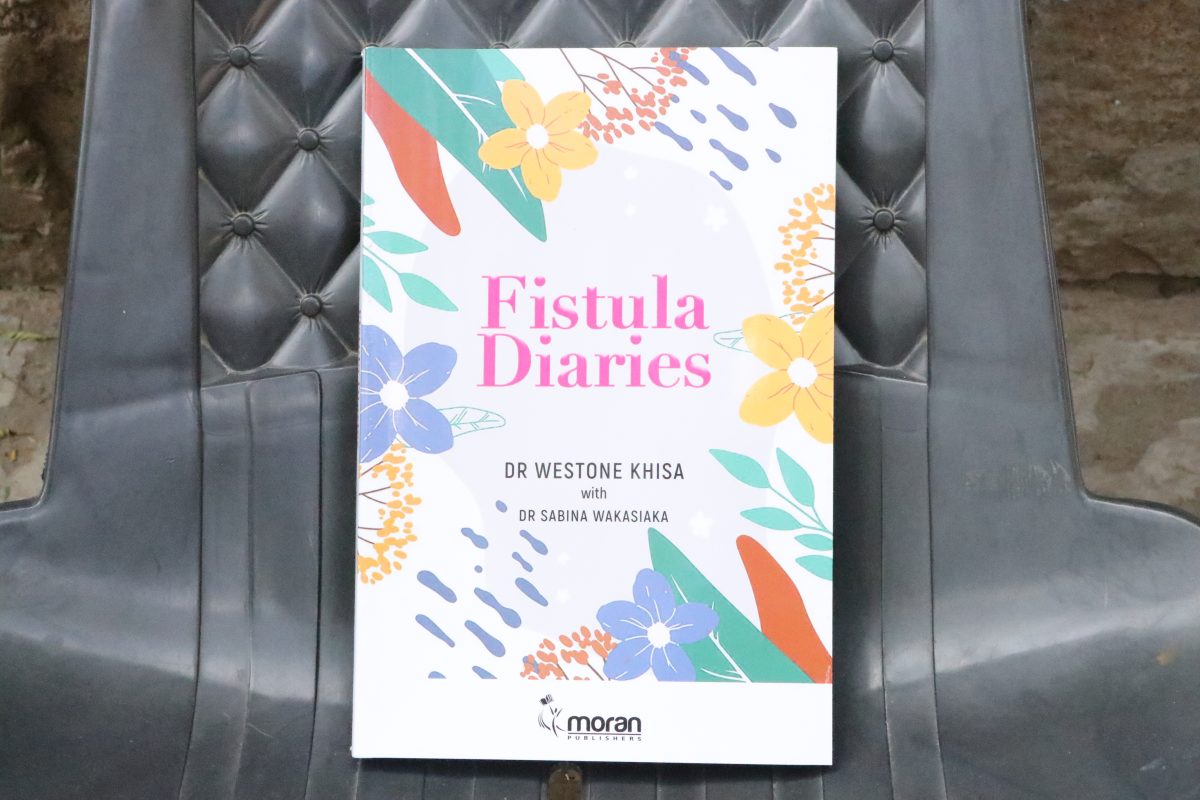TITLE: Fistula Diaries
AUTHORS: Dr Weston Khisa with Dr Sabina Wakasiaka
PUBLISHER: Moran (EA) Publishers
REVIEWER: Mbugua Ngunjiri
The image of a mother suckling her, while seated under a tree, is a common occurrence, particularly in rural settings, is one that evokes warm feelings to whomever beholds it. However, the image we are about to encounter has a very disturbing aspect to it.
It is the stuff hallucinations are made of. Tied around the woman’s neck is a noose, fastened to a branch, high up in the tree.
Let that sink in for a moment.
The woman was in the process of ending her life, when the toddler she is presently nursing, interrupted the process. She had been asleep and when she woke up, she went out in search of the mother.
Her deadly mission ‘postponed’, the mother’s maternal instinct kicked in and she started nursing the child who was crying out in hunger. This is a temporary setback, she told herself; determined to finish her mission, after she took the child back to the house.
That is the disturbing image that met the woman’s mother when she happened onto the scene.
Now that we have recovered from the initial shock, let us examine the facts behind the woman’s attempted suicide. You, by now, know that every suicide has a story behind it, and that ‘story; is what we shall discuss today.
You also notice the woman under discussion is anonymous; there’s a reason behind it, as we shall soon discover.
The explanation comes in the form of Obstetric fistula. Fistula is a debilitating medical condition associated with child birth. It mostly occurs in situations where labour is prolonged and childbirth delayed.
Such a situation results in a tear of the birth canal, compromising the mother’s ability to hold urine or stool.
The unfortunate inevitability of this condition is the foul smell that accompanies these poor women wherever they go. What follows is the ostracism by society, friends and even close family members.
For the suicidal mother above, the husband wanted nothing to do with her and kicked her. She sought refuge in her parent’s home.
This brings us to Fistula Diaries, a book written by Dr Westone Khisa and Dr Sabina Wakasiaka. It gives case studies of women who suffered from Fistula and how they got medical intervention.
The book is a joint venture between Moran (EA) Publishers and Applewood Medical Centre. The overall goal here is to ensure that motherhood is safe for all.
Dr Khisa has operated on about 4,000 cases of mothers who suffered from the scourge, restoring they dignity and therefore motherhood.
It is estimated that 2 million women in Sub-Saharan Africa, Asia, the Arab region and Latin America, suffer from Fistula, with 75,000 new cases developing each year.
Known as the silent epidemic, because of the shame and stigma attached to it, Obstetric Fistula, which occurs in cases of delayed and complicated childbirth, manifests itself in the inability to control urine and faecal matter.
Almost all cases of fistula end up in separation of the woman from her husband, a separation initiated by husbands, with subtle and not-so-subtle encouragement of their families.
This other story in the book perfectly illustrates how the stigma associated with fistula, brings about the breakdown of the institution of marriage.
When this woman – let us call her Stella – suffered fistula, after giving birth, the husband, due to the complications we discussed above, knew he would chase her away. However, being the coward that he was, he could not bring himself to do it openly.
He therefore conspired with his equally wicked parents to lure Stella to their rural home, on the pretext that he would construct a house in the village, where he would later join her.
The moment she landed in the village, her in-laws started mistreating her; they clearly intended for her to ‘eject’ herself from the family, yaani; akufukuzae, hakuambii toka.
When she could not endure the humiliation anymore, she decided to go back to her husband in the city, where more humiliation and misery lay in wait.
Unknown to her, the moment she left for the village, the cowardly husband moved out of the house they rented and even got himself another wife.
Would he have married another woman without the connivance of his parents? No need to answer this question; it is blindingly obvious.
From the above, it is now clear why the women, whose stories are told in the book, remain anonymous; the stigma associated with the condition. The anonymity afforded to them enabled them to freely tell their stories, including the most embarrassing.
Away from the gloom and doom brought about by these case studies, the good news is that all them received corrective surgery, which completely healed them and were able to resume their normal lives.
The authors must be commended for writing the book. It is one thing to do the good work of attending to these mothers, it is equally important to create awareness about the condition and to assure the victims that there is help out there.
The message from Fistula Diaries to people with friends and relatives suffering from this condition is quite simple really; do not keep them hidden. Talk about them; do not tire of knocking on doors; help is out there waiting for them.
Let us go back to the suicidal mother.
After her mother rescued her, she contacted a childhood friend who was a pastor and who agreed to host the poor mother. You can imagine her relief, when the host family treated her with care and understanding, notwithstanding her embarrassing condition.
That was not all, the pastor revealed to her that his wife had been a past victim of that condition. Perhaps that explained their empathy. It is through this couple that she got the help she sorely needed.
The authors however caution that even with surgery and treatment, more needs to be done. Due to the prolonged periods of stigma, most victims suffered irreparable psychological trauma, which makes them withdraw from society.
Even after getting healed, these women to need to be pulled out of psychological wilderness their condition plunged them. This can only be done through sustained counselling, which will serve to reintegrate them back to society.

